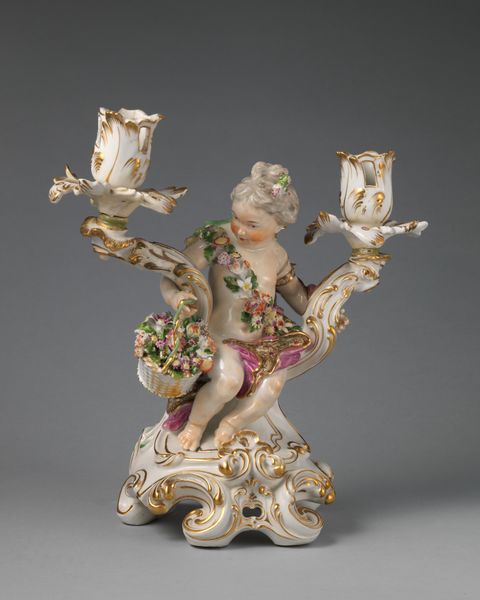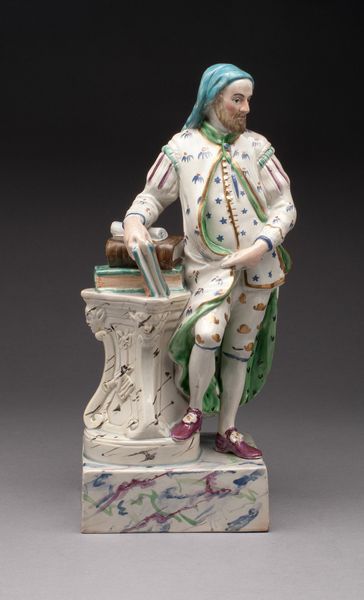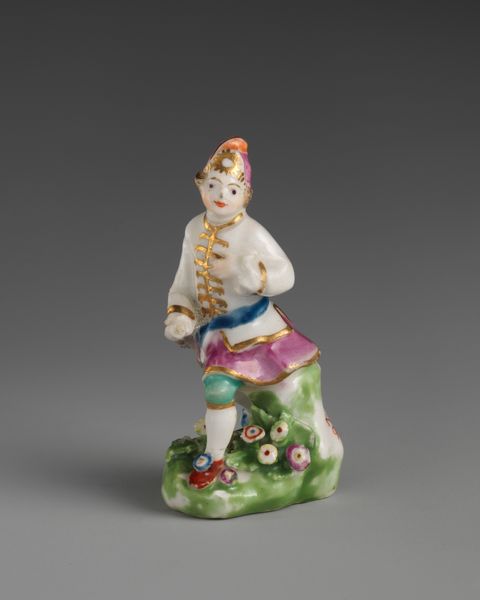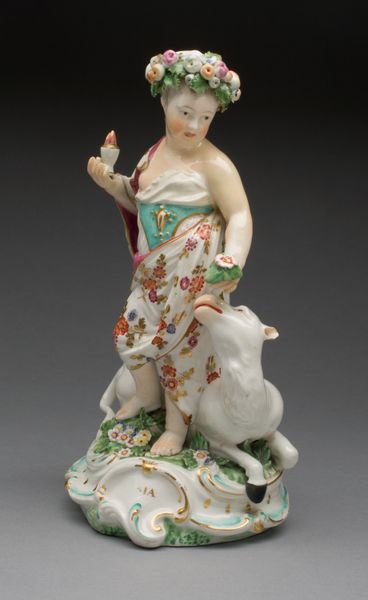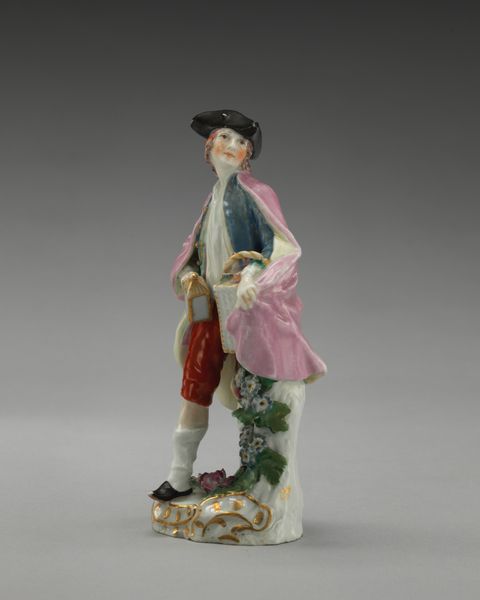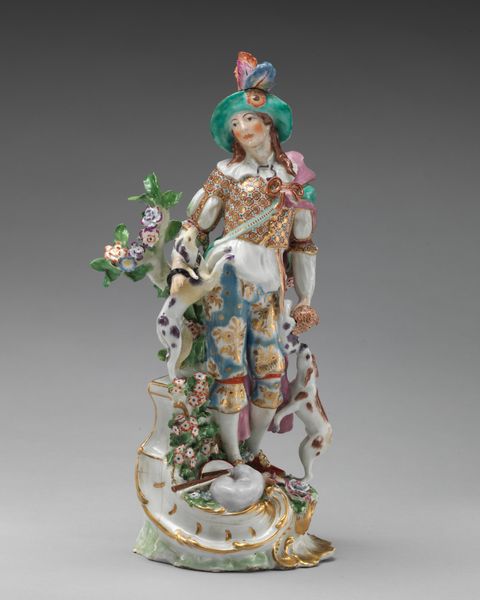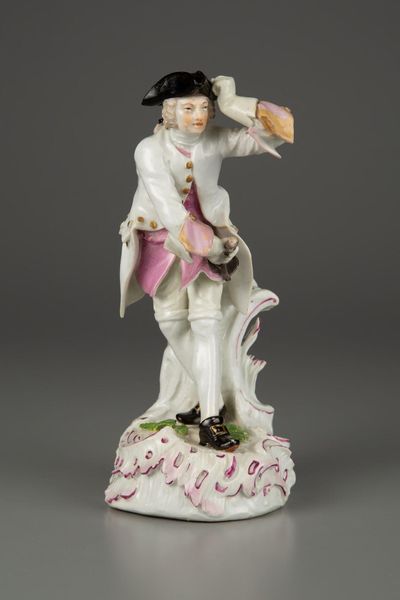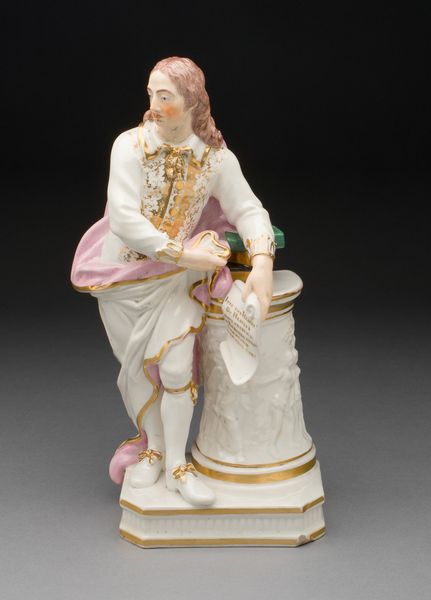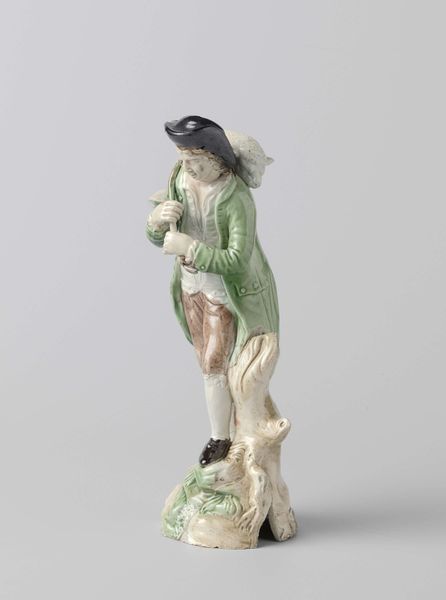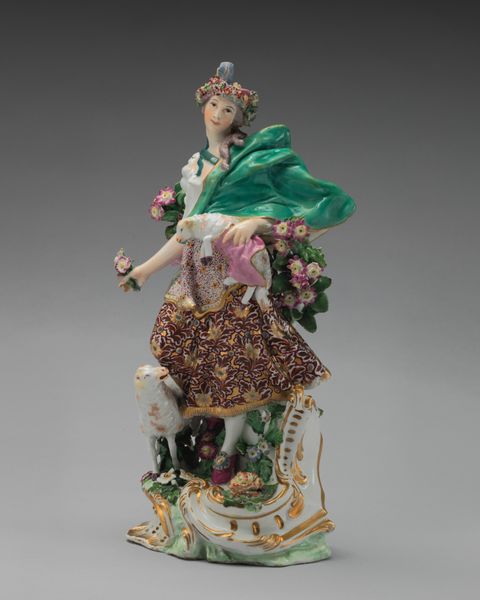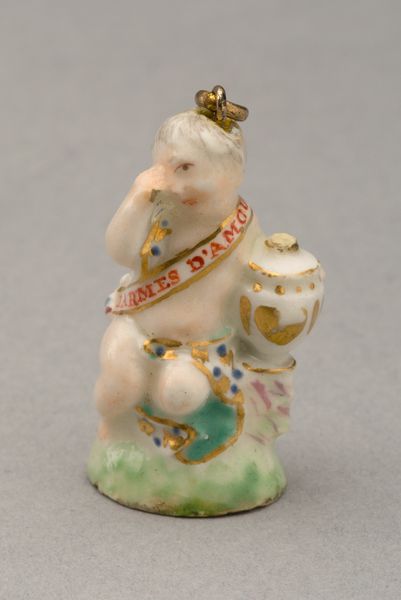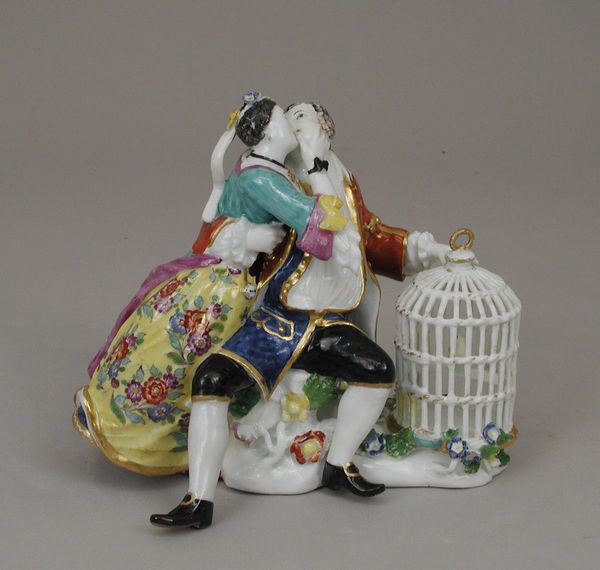
ceramic, porcelain, sculpture
#
portrait
#
ceramic
#
porcelain
#
figuration
#
sculpture
#
decorative-art
#
miniature
#
rococo
Dimensions: H. 14.1 cm (5 9/16 in.)
Copyright: Public Domain
Curator: Isn’t he delightful? We’re looking at a porcelain salt cellar made around 1762-1770 by Johann Friedrich Lück. You can find it here at the Art Institute of Chicago. Editor: Gosh, it's flamboyant, isn't it? Almost ridiculously so. That little man practically spilling over with charm. Curator: That’s the Rococo spirit for you! Ornament and playful elegance, right down to the ruffled cuffs and gold trim. Editor: Exactly. And to think it’s a salt cellar! Imagine the dinner parties. Such fuss over…salt. Were the social elites really that frivolous? Curator: I suppose it was a means of display. The very best porcelain, intricate figurines – these salt cellars were more than just functional; they were table sculptures showcasing wealth and taste. Look at the way the figure is integrated. Editor: It’s almost theatrical! The man in powdered wig and breeches leans against the receptacle, with such a flourish. His raised hand, is he blessing the salt? I wonder, did these objects reinforce social hierarchies simply through their existence and display? Curator: Absolutely. The aristocracy cemented their status through these material signifiers, art, finery, extravagant design—that were totally out of reach for ordinary people. The fact that a salt cellar could become such a statement speaks volumes, no? Editor: Right? Makes you question what our "salt cellars" are today: Status symbols dressed up as daily necessities. What a thought! Curator: I hadn’t considered that. Makes one wonder what people will make of it all in two centuries, eh? Editor: No doubt. I’m certainly pondering that more after seeing this little performance in porcelain.
Comments
No comments
Be the first to comment and join the conversation on the ultimate creative platform.

